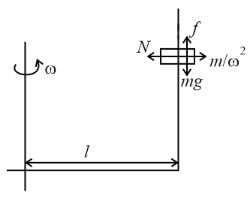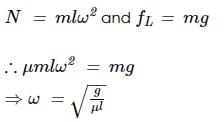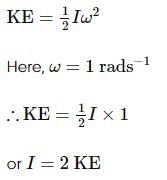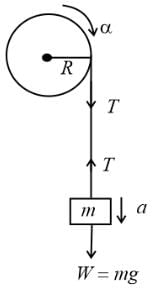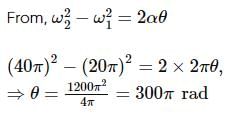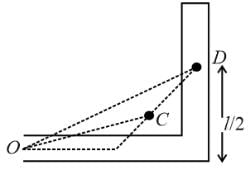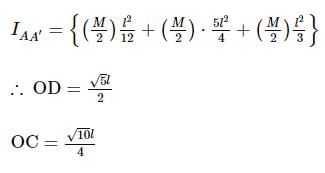BITSAT Physics Test - 4 - JEE MCQ
30 Questions MCQ Test - BITSAT Physics Test - 4
A projectile is projected with an initial velocity of  The equation of the trajectory followed by the projectile will be
The equation of the trajectory followed by the projectile will be
 The equation of the trajectory followed by the projectile will be
The equation of the trajectory followed by the projectile will beTwo springs with spring constant K1 and K2 are stretched by the same force. If the potential energy stored in the two springs respectively is U1 and U2 and the ratio U1: U2 is given to be 1 : 2, find the ratio of the spring constants K1 : K2.
In a situation it is observed that the coefficient of restitution of a collision is greater than 1. This condition implies to the possibility that
A particle of mass 2 kg is at the point P of a circular track as shown in the figure. It is released from the rest. At point Q, the velocity of the body is 10 m/s. If the radius of the track is 40 m, what is the work done by the body against friction between points P and Q? (Take g = 10 N/m2)
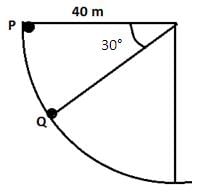
What will be the angular velocity of the rotation of the Earth, so that the acceleration due to gravity at the equator becomes zero? Radius of the Earth = 6400 × 103 meters and g = 9.8 m/s2
A force F(x) = -2kx is acting on a body of mass 1 kg, moving along the positive x-direction. The velocity of the particle at time t = 0 is zero and the displacement at t = 0 is 2 m. If k = 1 Nm-2, what is the velocity of the body when the displacement is 1 m?
A time-dependent force F is acting on a block of mass 10 kg. The plot of the magnitude of force versus time is given below. The momentum gained by the body at the end of 20 seconds will be
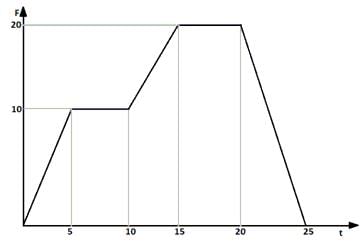
A ball of mass m, moving with a constant velocity, collides with another identical ball at rest. After the collision, the first ball acquires velocity v1 and the second ball that was at rest before collision acquires velocity v2. If the coefficient of restitution is given to be 5/7, what will be the ratio v1 : v2?
A circular ring of mass m is rolling without slipping along an inclined plane. The angle of inclination of the plane is given to be θ, and the linear velocity of the ring at the bottom of the inclined plane is v. If a body of the same mass is slipping on the same inclined plane, what will be the velocity at the bottom of the inclined plane? Consider the plane to be smooth and frictionless.

In the graph, the stress-strain curve for two different materials P and Q are plotted. Which of the following statements are correct?
I. Tensile strength of P is more than that of Q.
II. Young's modulus of P is more than that of Q.
III. Tensile strength of P is less than that of Q.
IV. Young's modulus of P is less than that of Q.
Refer to the system shown in figure. The acceleration of the masses is

Two blocks of masses m and 2m are connected by a light string passing over a frictionless pulley. As shown in the figure, the mass m is placed on a smooth inclined plane of inclination 30° and 2m hangs vertically. If the system is released, the blocks move with an acceleration equal to
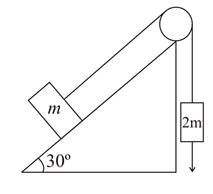
A wooden box of mass 8 kg slides down an inclined plane of inclination 30° to the horizontal with a constant acceleration of 0.4 ms−2. What is the force of friction between the box and the inclined plane? [g = 10 ms−2]
A Gardner waters the plants by a pipe of diameter 1 mm. The water comes out at the rate of 10 cm3s−1. The reactionary force exerted on the hand of the Gardner is
Which of the following statements is absolutely correct about mass?
If the block P as shown in the figure below were to be at rest, what should the magnitude of force F be?

A block of mass 2 kg rests on a rough inclined plane making an angle of 30° with the horizontal. The coefficient of static friction between the block and the plane is 0.7. The frictional force on the block is
A pendulum consisting of a small heavy bob suspended from a rigid rod oscillates in a vertical plane as shown in the figure. When the bob passes through the position of equilibrium, the rod is subjected to a tension equal to twice the weight of the bob. Through what maximum angle α from the vertical will the pendulum be deflected? Disregard the weight of the rod and the resistance of the air.
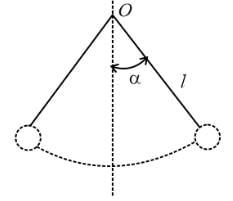
A solid disc of mass M is just held in air horizontal by throwing 40 stones per sec vertically upwards to strike the disc each with a velocity 6 ms−1. If the mass of each stone is 0.05 kg 0.05 kg . What is the mass of the disc (g = 10 ms−2 )
A L shaped rod whose one end is horizontal and the other is vertical is rotating about a vertical axis as shown with the angular speed ω. The sleeve has mass m and friction coefficient between rod and sleeve is μ. The minimum angular speed ω for which sleeve cannot slip on rod -
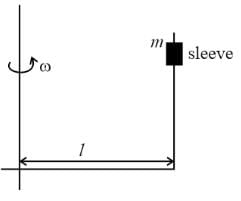
One quarter of the disc of mass mis removed. If r be the radius of the disc, the new moment of inertia is
A spool is pulled horizontally by two equal and opposite forces as shown in Figure. Which of the following statements are correct?
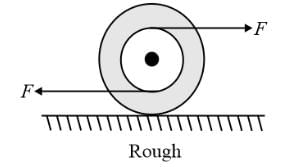
The moment of inertia about an axis of a body which is rotating with angular velocity 1 rads−1 is numerically equal to
A fly wheel of radius R and of moment of inertia I can be rotated in vertical plane without friction about its natural axis. A light string is wound over the wheel and a body of weight W is suspended at the other end of string. The angular acceleration of wheel when suspended body is released is
A solid sphere roll down two different inclined planes of same height but of different inclinations. In both cases
At any instant, a rolling body may be considered to be in pure rotation about an axis through the point of contact. This axis is translating forward with speed
The moment of inertia of a body about a given axis is 1.2 kg m2 . Initially, the body is at rest. In order to produce rotational kinetic energy of 1500 J , and angular acceleration of 25 rad s−2 must be applied about that axis for a duration of
A flywheel rotates with uniform angular acceleration. Its angular velocity increases from 20π rads−1 to 40 π rads−1 in 10 s. How many rotations did it make in this period?
A L shaped rod of mass M is free to rotate in a vertical plane about axis AA' as shown in figure. Maximum angular acceleration of rod is-
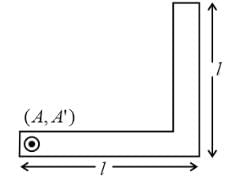


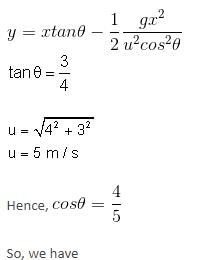
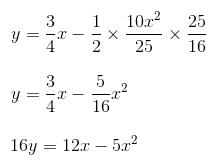

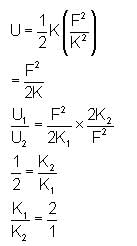

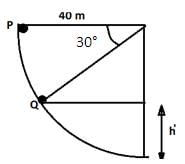

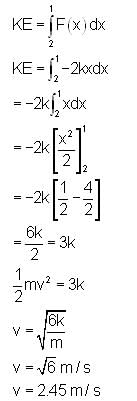


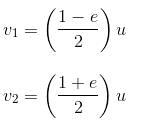
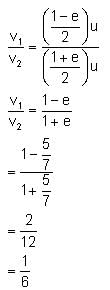



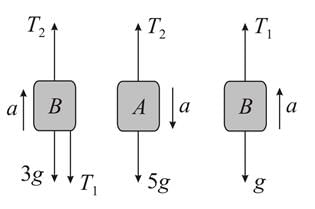





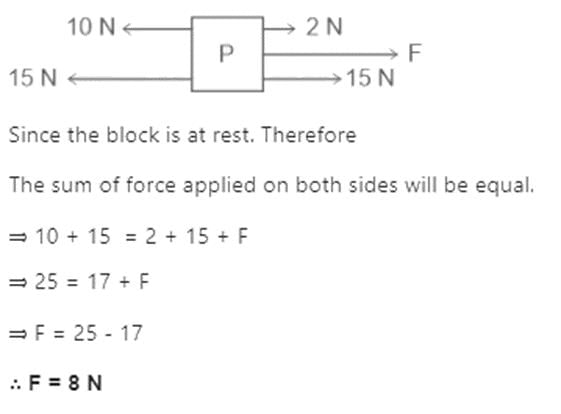




 it is possible to find the height from which the bob dropped ;
it is possible to find the height from which the bob dropped ;

